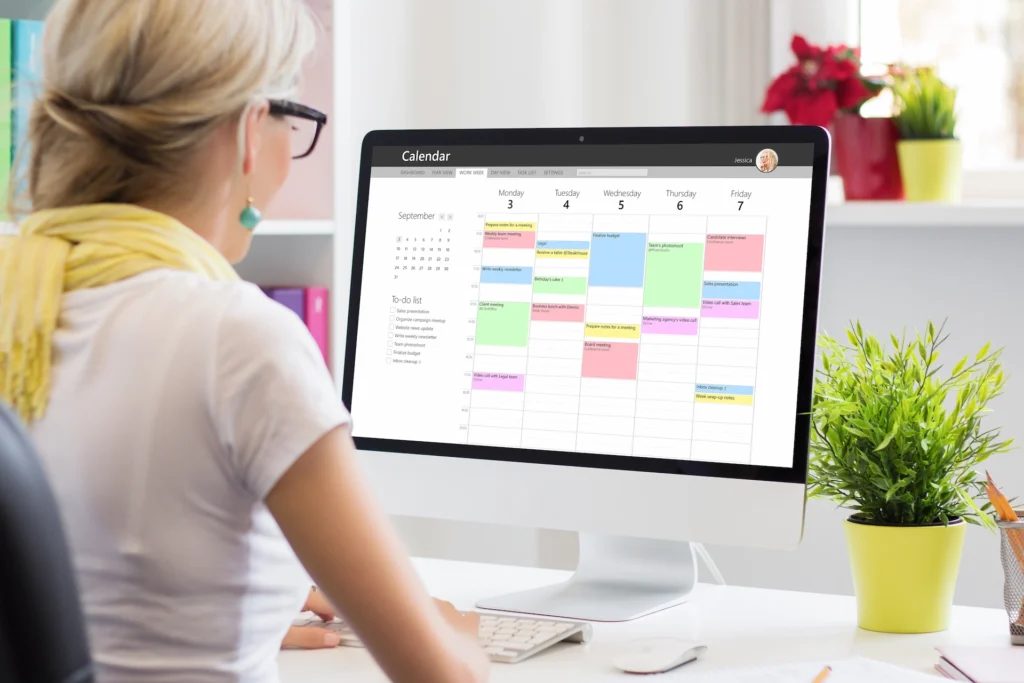How to Be More Productive: Master RICE & Time Boxing Strategies

At the time, I believed that crossing off as many tasks as possible was the secret to productivity. But looking back, I’ve realized that true productivity isn’t about doing more it’s about saying no to what doesn’t align with your goals
Turning Chaos into Clarity
What used to be a chaotic list of “things to do” has transformed into a deliberate system designed to align with my overarching goals. Now, I focus on strategies that help me get things done and ensure that I’m making meaningful progress.
If you’re wondering how to be more productive in a way that aligns with your priorities, I’ve got two game-changing frameworks to share: time blocking and the RICE framework for prioritization.
Combining Time Boxing and RICE
The combination of time boxing and the RICE framework is a simple yet powerful way to understand how to be more productive. RICE helps you decide what’s most important, and time boxing ensures you focus on it.
- RICE answers the “what”: Which tasks will have the biggest impact with the least effort?
- Timeboxing answers the “when”: When will you dedicate focused time to these priorities?
Why it works: You use RICE to rank your tasks, then timebox your schedule to make real progress. It’s not just about doing more; it’s about doing what matters most.
1. RICE Framework: Prioritize
The RICE framework helps you evaluate tasks and projects based on four factors: Reach, Impact, Confidence, and Effort. This structured approach ensures you’re investing time and resources where they’ll have the greatest return, helping you discover how to be more productive by focusing on what matters most.
💡 How RICE Works:
- Reach: How many people or projects will this task benefit?
- Impact: On a scale from low to high, how much will this task contribute to your overarching goals?
- Confidence: How certain are you that this task will achieve its desired outcome?
- Effort: How much time, energy, and resources will this task require?
💡 Use the formula:
(Reach × Impact × Confidence) ÷ Effort = Priority Score
💡 Example: Imagine you're deciding between creating a new marketing campaign or refining your sales strategy:
- Marketing Campaign: Reach (1,000) × Impact (3) × Confidence (80%) ÷ Effort (5) = 480 Priority Score
- Sales Strategy: Reach (500) × Impact (4) × Confidence (70%) ÷ Effort (2) = 700 Priority Score
The higher score for the sales strategy indicates it’s the more valuable task to tackle first.
Using the RICE Scoring Framework to Prioritize Initiatives
- Reach: For a go-to-market strategy, we consider how many people or projects a specific channel can benefit. For example, a targeted social media campaign might reach thousands, while a niche partnership might reach only hundreds.
- Impact: We assess how much each channel will contribute to our overarching goal. A high-impact channel significantly drives brand awareness or sales, even with a smaller audience.
- Confidence: Confidence is crucial—we ask how certain we are that the chosen channel will deliver results. Data from past campaigns, market research, or industry benchmarks can boost this confidence.
- Effort: Finally, we evaluate the time, energy, and resources each channel requires. Creating a webinar series requires substantial effort, whereas repurposing existing content for a newsletter requires less.
Example: Choosing Between Two Marketing Tasks
Imagine you need to decide between two marketing tasks:
- Launching a new email campaign
- Improving your website’s call-to-action (CTA) buttons
Here’s how the RICE framework helps:
- Reach: The email campaign will reach 2,000 subscribers, while improving the CTA buttons will impact 10,000 daily visitors.
- Impact: The email campaign has a medium impact (4), as it drives potential leads. Improving CTA buttons has a high impact (5), directly boosting conversions.
- Confidence: You’re 70% confident the email campaign will increase engagement, but you’re 85% sure better CTA buttons will lead to more sales.
- Effort: The email campaign will take 3 weeks to create and launch, while the CTA improvement requires just 1 week to design and implement.
Calculation:
- Email Campaign: (2,000 × 4 × 70%) ÷ 3 = 1,867
- CTA Buttons: (10,000 × 5 × 85%) ÷ 1 = 42,500
Result: Improving the CTA buttons scores significantly higher, so it should be your top priority.
Why It Works: Whether you use the RICE framework in detail or as a quick mindset shift, it’s a powerful way to become more productive. Even asking, “Is this a low-effort, high-impact task?” can help you stay focused on what matters.

2) Timeboxing: Execute Focus on Results, Not Tasks
Traditional to-do lists focus on completing individual tasks, often leading to a fragmented and overwhelming day. Timeboxing based on objectives, on the other hand, shifts the focus to outcomes. It involves allocating specific blocks of time to work toward achieving a clear purpose, helping you prioritize progress over mere task completion.
Key Features of Timeboxing Based on Objectives:
1. Outcome-Oriented: Instead of listing tasks, you define clear objectives during each time box.
Example: Instead of writing “reply to emails” on your list, you set an objective like “clear the inbox to focus on top-priority client responses.”
2. Prioritization: You identify the most critical objectives for the day and allocate time accordingly.
Example: If your objective is to finalize a client proposal, you dedicate a focused 90-minute block to drafting and revising it.
3. Flexibility: While you have a set time limit, you can adapt your approach within the time box to achieve the objective.
Example: During a time box for creating a presentation, you might shift from slide design to refining your narrative depending on what needs more attention.
Time Boxing: Why It Works
Time boxing is a powerful way to boost productivity by dedicating specific time slots to individual tasks. But for time boxing to be truly effective, it’s essential to focus on one task at a time. Multitasking might seem like a shortcut, but research shows it reduces efficiency, increases mistakes, and wastes mental energy.
When you pick a task for your time box, stick to it. Commit fully until it’s either complete or you’ve made significant progress. Shifting between tasks mid-way can disrupt your flow and reduce the quality of your work.
Why Single-Tasking Works with Time Boxing:
- Sustained Focus: Switching between tasks forces your brain to refocus repeatedly, which slows you down. Sticking to one task maximizes focus and productivity.
- Better Quality: Concentrating on one task at a time helps you produce higher-quality work with fewer errors.
- Clear Progress: Single-tasking ensures you see tangible progress, reducing the mental clutter multitasking creates.
Example in Action:
Let’s say you’ve time boxed 90 minutes to write a client proposal. During this time, commit to writing exclusively, no checking emails or jumping to other tasks. At the end of the session, you’ll have made significant progress, without distractions slowing you down.
By pairing time boxing with single-tasking, you’ll discover how to be more productive and achieve meaningful results without the stress of juggling multiple priorities at once.
This integrates the concept seamlessly into the existing structure while maintaining the focus on time boxing. Let me know if it aligns with your vision!
Example: Let’s say RICE shows that improving your sales strategy is the best use of your time. Instead of endlessly tweaking other things, you block out 90 minutes in the morning to work on it distraction-free.
As leaders, casting a clear vision is essential to aligning our actions with our purpose. Tools like RICE and time boxing help us stay focused, learn from our daily wins, and master how to be more productive. Whatever your task is today, commit to it, focus, and win it!
For more strategies on staying aligned with your purpose while scaling effectively, check out this article: Scale Effortlessly: 5 Strategies to Stay True to Your Purpose.
Book a free strategy meeting to see how the right strategy and tech can help you scale effortlessly.
Share
Elevate your presence – Schedule with us.
Our Locations
San Antonio
10127 Morocco St, #102
San Antonio, TX 78216 USA
Austin
701 Brazos St Ste 500
Austin, TX 78701

